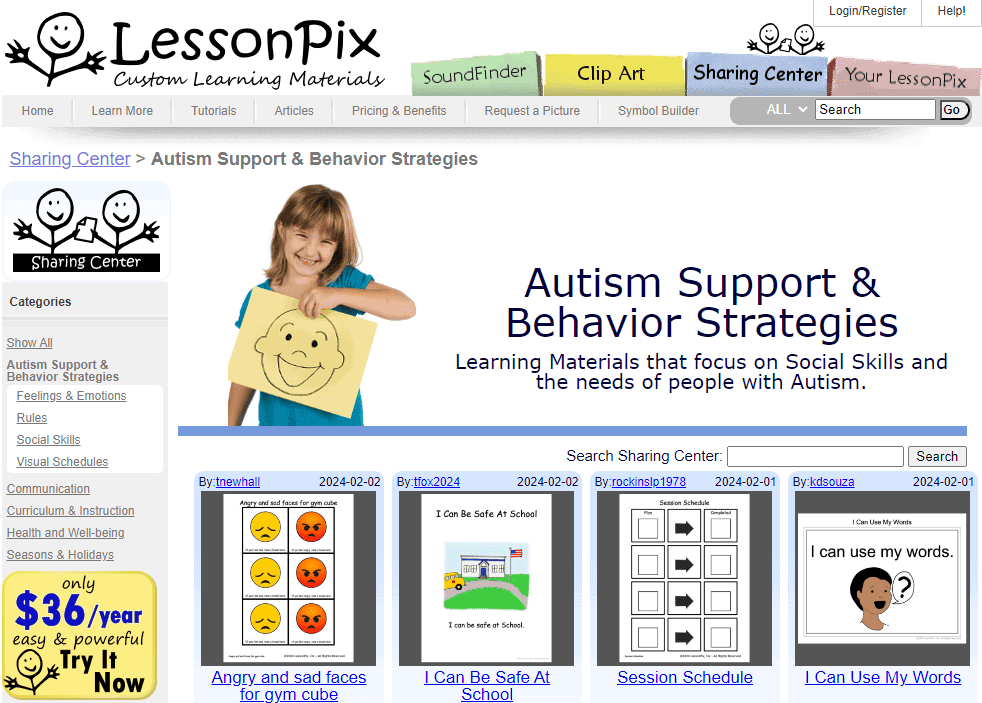As a parent, it is so important, and gratifying to be able to understand your child’s thoughts and feelings. However, when you have an Autistic child who struggles with verbal communication, this can be a real challenge. In this article, we’ll explore effective strategies to bridge this communication gap and help nonspeaking children with autism express their needs, emotions, and thoughts.
Nonspeaking Vs. Non-Verbal
Many are now advocating for an awareness that the label “nonverbal” is often burdened with negative connotations. This is mainly because it’s frequently misunderstood by the general population as suggesting a lack of language comprehension or usage. Advocates are actively working to alter this misconception. Essentially, being “nonverbal” means one does not communicate through spoken language, but there’s an increasing push to recognize that non-speaking individuals have their own rich forms of language expression.
Social media and personal blogs has significantly contributed to advancing this dialogue, providing a dynamic forum for raising awareness and discussing important issues. Additionally, there is a deliberate push within these circles to move away from oversimplified and judgmental categories such as “low-functioning” or “high-functioning,” aiming instead to appreciate and articulate the distinct abilities and needs of each person without attaching any evaluative labels
Nonspeaking Does Not Equal Nothing to Say
Autism is a broad spectrum, and each child is unique. Some children with autism can use spoken language, while others may have difficulty or remain nonspeaking. Being nonspeaking doesn’t mean your child has nothing to say. It simply means we need to find different, non-traditional channels to facilitate their communication.
1. Sign Language: A Visual Approach to Communication
Sign language can be a powerful tool for nonspeaking Autistic children. Unlike spoken language, which can be abstract and intangible, sign language is visual and tactile, making it often more accessible to children with autism.
American Sign Language (ASL) is a complete, natural language widely used in the United States and Canada. It’s not simply English translated into signs; it has its own grammar and syntax. If you decide to use ASL, it’s beneficial to learn it as well to foster communication with your child.
Some nonspeaking Autistic children may not use and learn an entire language, but only a few important signs.

2. Visuals, visuals, visuals!
Visuals can be an invaluable form of communication. Nonspeaking children often face challenges in expressing their thoughts, needs, and emotions which can lead to frustration. Visual aids such as picture cards, communication boards, visual schedules, and social stories provide an alternative means of communication that is more accessible and less overwhelming than spoken words. Visuals can help Autistic children to convey their desires, understand routines, and navigate their environment more effectively. They offer a visual framework that aids in comprehension and reduces anxiety, ultimately promoting better social interactions and a higher quality of life for these children.
Speech-language pathologists are experts at creating visuals. Want to create your own? Check out lessonpix.com, a well-loved website used by SLPs.

3. Augmentative and Alternative Technology: Harnessing Innovation for Communication
Speech Therapists (SLP) are often trained in Augmentative and Alternative Communication (AAC) technology, which is a game-changer for nonspeaking Autistic children. From simple communication boards to advanced speech-generating devices, these tools can greatly enhance your child’s ability to communicate.
Modern devices and apps enable communication through typing, selecting symbols, or even by tracking eye movement. Some can convert text or symbols into spoken words, providing a voice for your child. An SLP or trained professional can help you navigate the range of assistive technology options and find the right fit for your child.

Patience and Persistence: Every Child is Unique
It’s essential to remember that each child is unique, and what works for one may not work for another. Finding the right communication strategy often involves trial and error. As you embark on this journey, patience and persistence are your best allies.
Building communication skills can be a slow and gradual process, especially for nonspeaking children. However, every small step forward is a victory. Celebrate these moments—they are stepping stones on the path to effective communication.
The Takeaway
There are multiple communication strategies for nonspeaking children with autism—sign language, visuals, and AAC being just a few. Engaging with an SLP can significantly help navigate these options and find the best strategy for your child.
The goal is to unlock meaningful communication, allowing your child to express themselves and enriching their interaction with the world.
We’re always happy to answer questions, and if you are based in British Columbia, you can book a free consultation here to discuss speech therapy for your child.

